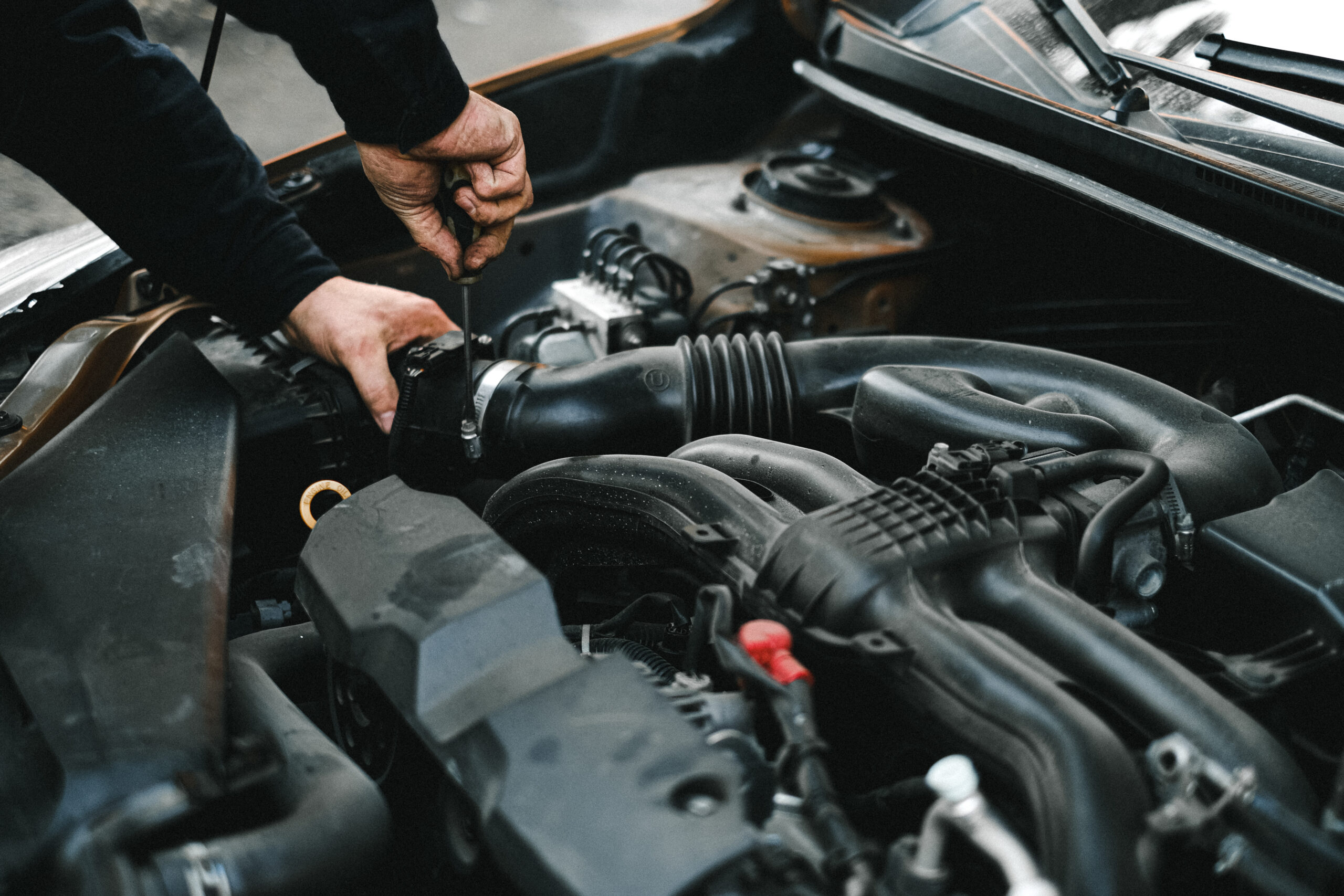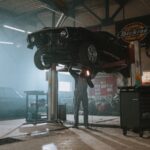

The Ultimate Car Maintenance Guide
After buying a car, it is important that you understand the vehicle. The manufacturer went to great lengths to ensure that every single part works according to design and that your ownership will be hassle free. A detailed owner’s manual was published for the car owner to peruse in order to understand how to operate and maintain the car. Every switch and button is detailed along with any light that may illuminate on the dashboard or screen. It is important to be completely familiar with the owner’s manual in order to keep your vehicle maintained. It is not possible to maintain a machine in which the operation or functionality are unfamiliar to you.
Once you are confident with how to operate your vehicle, the next manual that you need tells you how to take care of it. The vehicle service manual details what needs to be done and when in order to have trouble-free operation of your car. It may not be necessary to know the maintenance details unless you are a DIY enthusiast. However, your dealer or mechanic should have access to a physical copy or an electronic document for your vehicle. The service manual details the timing and the process of the preventive maintenance that needs to be performed. It also includes a section where the service is recorded. It is important to keep diligent records because this will be useful when you want to sell the vehicle.
To understand the importance of maintenance, you need a bit of understanding of the key systems that need to be monitored. Most modern vehicles have computerized systems that report faults and warn you when to take action, but you still need to carefully monitor everything yourself. Let’s take a look at the systems and how they need to be maintained.
Engine Maintenance
Your vehicle’s engine will last for as long as you take care of it. It is made up of many moving parts. What goes wrong in the engine is mainly related to the wear of the moving parts. Your main role is to ensure that wear is reduced to the minimum by simply ensuring that the moving parts are well lubricated and that they are operating in a clean environment free of contaminants.
All you need to do is follow the manufacturer’s recommendations on service. This includes the intervals and the recommended engine oil and filters. If you operate in a dusty environment or you drive over short distances frequently, such as city driving, then you may need to reduce the service interval. A well-serviced engine will save you a lot of money in the long run. Never compromise on your oil and filter changes and don’t try to save money on cheap, low-quality oil. Engine care, therefore, means that you need to change the oil and filters as advised.
Engine Oil
Engine oil is the most critical service component of your engine. Our advice is simple, “Do not compromise on engine oil.” Follow the manufacturer’s quality and viscosity specifications or use an even higher specification. Follow the drainage intervals or reduce them – especially in severe driving conditions such as city driving with frequent stop-start driving.
Filters
Dust, wear particles, and other combustion by-products should be kept away from the engine parts. Abrasive wear is one of the most destructive forms of wear, and once it sets in it becomes very difficult to stop it. Engine oil and air filtration are crucial to prevent abrasive wear. Make sure you use quality filters to effectively do the job. Your air, fuel, and oil filters should be changed regularly as recommended.
Engine Cooling System
The cooling system is critical in the preservation of your engine. The engine is cooled by two fluids. The first is the engine coolant that circulates through the radiator. The second is the engine oil, which also exchanges heat with the engine coolant.
The system is normally robust. All you need to do is to check the fluid levels in the overflow tank and sometimes the radiator as well. You also need to check for any signs of leaks or signs of coolant and oil mixing.
Problems are usually indicated by your temperature gauge on the dashboard. Some symbols may appear on your dash to indicate problems with the cooling system.
The coolant must be flushed on a regular basis. Follow your vehicle manufacturer’s recommendation for the correct coolant to use.
The radiator coolant’s function is not only to increase the temperature range, but it also contains additives to help prevent corrosion in the radiator and lubricate the water pump. You can extend the life of your radiator by using the recommended coolant.
Hoses deteriorate with time and that deterioration is increased if there are oil leaks. Ensure that there are no leaks by checking under your vehicle when you park.
Electrical Systems
Battery
The most important component of the electrical system is probably your car battery. It may be sealed/maintenance-free or an open one. The sealed battery has no issues as long as your charging system is working properly. The open one may be subject to electrolyte evaporation, which means that you need to regularly check the electrolyte level.
The cells should always be covered by the electrolyte. Most drivers top up with distilled water, but over time this may affect the electrolyte density. Electrolyte density is an indication of the state of charge of the battery. Have a battery mechanic check your battery regularly.
You should check the terminals for sulfation yourself. This shows up as the bluish or whitish powdery stuff on the terminals and especially the positive terminal. Sulfation affects the electrical transmission or battery charging.
Ensure that your terminals are sulfate-free by applying battery grease or even petroleum jelly as a DIY car maintenance hack.
Lights
The other electrical system to check is your lighting system. You need to regularly check the lighting system to ensure that all lights and switches are working properly. These include the indicators, park lights, brake lights, headlights, and reverse lights. Check that your dip switch is working and that the headlights are properly focused.
Spark Plugs
Spark plugs are responsible for igniting the fuel-air mixture in the engine combustion chambers. With time they get fouled and become less efficient. This leads to difficulty in starting, higher fuel consumption, or reduced power. The vehicle manual will give you guidance on when they should be changed for your specific model.
Wheels and Tires
Most vehicles owners waste money on tires by neglecting to do simple maintenance. The most important and probably one of the cheapest maintenance practices you can do on your tires is wheel alignment.
Wheel Alignment
Wheel alignment ensures that your tires are gripping the ground evenly and therefore the weight of the vehicle is evenly distributed on each tire surface.
Wheel alignment also helps to point out any suspension issues that need to be rectified. A vehicle with suspension issues will not align properly.
Tire Inflation
The wear of your car’s tires is something that you can address by checking tire inflation. Each vehicle has recommended tire pressures. You can find these affixed somewhere on your car doors or elsewhere depending on the model. You can also check the operator’s manual for guidance.
Tire Rotation
Regular rotation is recommended to ensure that your car’s tires wear evenly between the front and back wheels as well as between the left and right wheels. Your tire mechanic should be able to help. Recommendations on the frequency of tire rotation vary, but it is usually between 4000 and 6000 miles.
Wheel Balancing
Wheel balancing helps to ensure that the tires rotate evenly and therefore also wear evenly. An unbalanced wheel vibrates at certain speeds, which you can feel on the steering wheel and even the whole vehicle. It can also lead to damage of your suspension system.
It is advisable to balance your vehicle’s wheels every 10,000 miles or whenever you feel excessive vibration as you drive. A bumpy drive or hitting a pothole can cause the wheels to go out of balance.
Tread Wear
Every tire has a treadwear indicator. You can look for the ‘TWI’ on the side of the tire. It helps to know when to replace your tires for safe use and driving.
Braking System
Failure of the braking system should never happen to you while you are cruising on the highway. The only way to avoid that catastrophe is to ensure that your brakes are checked regularly by a qualified mechanic.
Most passenger cars now have anti-lock brakes (ABS). A fault within the system will show on your dashboard with the ‘ABS’ symbol. It means you have to check the braking system.
The braking system consists of rotors and disc pads or drum brakes in the older generation vehicles. The braking system parts use friction to affect braking and therefore wear out with time or with the frequency of braking. Your driving habits also contribute to the life of your brake system parts. If you love accelerating toward a red traffic light then your braking system life will surely be shorter than someone who takes their foot off of the accelerator pedal well in time and eases braking into a gentle stop.
As a driver, you can feel whether your braking system needs to be checked. Your braking distance may increase or the vehicle may not brake straight with weight concentrated more on one side. There is generally no given interval to change your brake pads or drum.
However, as a driver you need to regularly check your fluid level and color. It should be at the recommended level as indicated on the brake fluid reservoir. When the fluids turn dark, it usually indicates that the seals are wearing out and you are likely to start having leaks. Your mechanic should be able to easily identify and repair such problems.
Suspension System
Most vehicles owners hardly appreciate the function of the suspension system. It’s not something that will really stop the vehicle from moving. Failures are not usually sudden and as they happen most drivers might notice a change in how the vehicle handles or the comfort of the ride. Drivers tend to adjust and accept it as the new normal.
However, the suspension system must be taken care of to avoid costly damage or even an accident. The suspension system can really be felt when we make a hard sudden brake, or when we make a quick swerve. The bottom line is that we lose control of the vehicle, or the vehicle simply goes where it chooses to, possibly resulting in an accident.
What are the suspension components that need to be checked?
Shocks and Struts
Struts and shock absorbers create a comfortable, even drive despite the surface. They also help to distribute the load and keep the vehicle steady especially when turning or making a sudden stop.
Recommendations on when to replace shocks and struts vary from 50,000 to 100,000 miles. As an experienced driver, you can tell when something is amiss. Your experienced mechanic can also advise you.
Some key signs include unusual tire wear, oil leaks, and unusual bounce or dive when making a sudden stop or acceleration.
Steering System
The steering system is considered part of the suspension system. It should be checked together with the whole suspension system. The mechanic who does your wheel alignment is usually able to notice if there is anything wrong with your steering system.
However, you check the fluid level regularly yourself while also regularly checking for leaks.
Clutch assembly
This is generally not a service component. As a driver, you can tell when your clutch is failing by the difficulty of gear changing. Since the assembly uses friction material, with time the material wears out and needs replacement or reconditioning. Depending on your driving habits, the clutch assembly can last from 30,000 to over 100,000 miles.
Serpentine Belt
This is also called the fan or accessories belt. As the name suggests, it drives various accessories such as the fan, the alternator, the power steering pump, the air conditioning compressor, and, in some vehicles, the water pump. It can also drive the brake vacuum.
This simply means that the serpentine belt has to be checked regularly, although it normally gives signs when failing. Some vehicles have them in pairs allowing you to drive safely to a mechanic and have it changed.
Some of the signs of a failing serpentine belt include a loud screeching noise when you press on the accelerator pedal, engine over-heating (fan not working), battery or electrical failure (alternator not working), and physically the belt will be frayed or cracked and possibly falling apart.
Timing Belt/Chain
The timing belt synchronizes the operation of the crankshaft and camshaft. The camshaft is responsible for the opening and closing of the valves to allow combustion to occur properly. The crankshaft is responsible for the up and down movement of the pistons within the crankcase.
When and if the timing belt snaps, the whole system goes out of synch. The valves’ movement stops, but the crankshaft continues to operate. This can lead to a collision of the pistons and valves, resulting in heavy engine damage. The repair work can be very costly. In some cases, it may be cheaper to get another engine.
It is therefore critical to know how to check for signs of an impending timing belt failure or when to replace it. Most vehicle manufacturers recommend replacement from 60,000 miles.
The belt is not very expensive for the crucial work it does. It is advisable to go for the best quality available and to replace it sooner than later.
Fuel System
The fuel system is easy to maintain yet it can have dire consequences if neglected.
All you need to do is practice cleanliness. This starts from the fuel you put into your reservoir. You need to get your fuel from clean sources. Since this cannot be guaranteed, your best bet is to ensure that your fuel filter or filters are changed as per recommendation and that they are high quality.
Avoid frequent re-fueling. You should keep your reservoir above half most of the time. The fuel system has dirt-sensitive and precise gadgets such as the injectors and injector pump. Small particles of dirt can easily interfere with the high-pressure fuel injection. The injectors may also end up dribbling that can lead to fuel loss and poor engine performance.
Your mechanic will advise you about the fuel system checks and calibration when due. This is a specialized exercise that requires special machines and highly qualified mechanics.
Wiper Blades
Wiper blades work very hard when clearing the windshield of water or ice. The rubber works by friction as it wipes the ice, water, or dirt from the screen. While the blades are strong, with time they wear out and need to be replaced. This can easily be noticed from how they wipe during rain or snowfall.
Other Fluids
Besides the engine oil, you should also check the condition and levels of the following fluids.
Clutch Fluid
The clutch fluid is responsible for gear changing in manual transmission. Normally the same fluid as brake fluid is used. The reservoir is often clearly labeled and easily accessible.
Windshield Washer Fluid
The washer fluid is necessary for cleaning your screen in the event of dirt or sometimes to lubricate the screen surface for easier and smoother wiping.
Transmission Oil
Transmission oil can be manual, automatic, or continuously variable transmission (CVT). Modern transmissions are so-called ‘fill-for-life’, which means that for the time the vehicle is on warranty the fluid is not changed. However, for older and higher mileage cars, topping up or complete fluid change may be necessary. Sometimes a big leak requires a complete fill-up.
If the system has got the means then ask your mechanic to regularly check fluid levels. You wouldn’t have a damaged transmission caused by oil starvation.
Differential Oil
Check for any signs of leakage. Follow your recommended drainage interval as provided in your maintenance manual.
Power Steering Fluid
The steering fluid reservoir is under the hood. Most vehicles use an automatic transmission fluid that is color-coded red. Check the level and signs of any leaks. When the level is low, your steering becomes hard to control.
There is no clear indication for most vehicles on when to change the fluid. Every two years or 50,000 miles is good practice for peace of mind.
Hoses
Hoses don’t normally fail. However, if there is an oil leak then the rubber may weaken and crack. It is advisable to check your hoses once in a while – especially if you notice some abnormal depletion of engine coolant or a rise in engine temperature.
Check for cracks that could be a sign of impending failure.
Keep it clean
Vehicles, just like your pets, also need to be clean. Clean the engine, cabin, and the car body. Apply some wax to preserve the paintwork, and avoid parking the car in the sun for long periods. Get rid of the mud and greasy dirt. There are many car care products to use. Purchase and use them and your car will look like new for a long time.
Conclusion
Hopefully this car maintenance guide leaves you feeling far more comfortable about caring for your car. A well maintained vehicle can last far longer than you might otherwise expect. You have invested your hard earned money into this purchase so it is important that you take good care of it.
Most people look for mileage when buying used vehicles when they should be looking for a service record. A well-maintained high-mileage car can be better than a poorly maintained low mileage car.
Cars are cheaper to run when the maintenance schedule as prescribed by the manufacturer is strictly followed. Engines can last beyond a million miles if well serviced and well-driven. It is all in your hands.
Your vehicle is like your beloved pet. If you look after it then it will also do the same.
Categories
- Car Maintenance (1)
- Car Reviews (2)
- Guides (7)
- Local Destinations (1)
- Uncategorized (1)
Recent Posts
Related posts


Best Car Washes in Plano, TX

The Complete Guide to Selling a Used Car in Dallas

How to Get a Car Loan with Bad Credit
Plano Used Cars
Used Car Dealership








